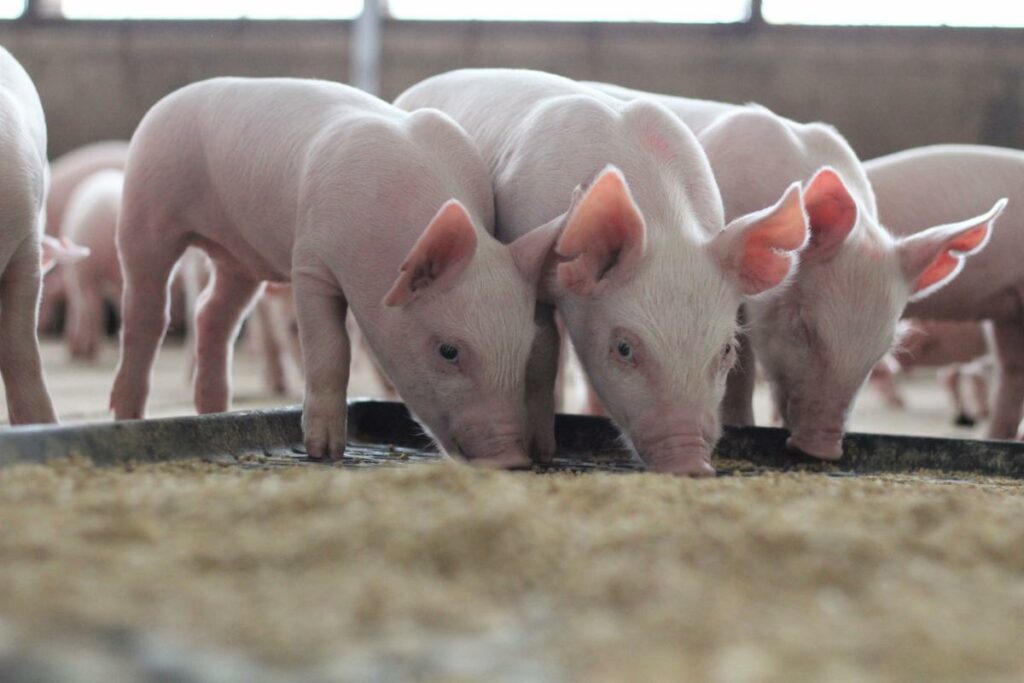
Most proteins in plant leaves are located in the chloroplasts, where approximately half of the proteins are soluble in the stroma and the remaining half are a component of the thylakoid membranes. The thylakoid membranes are a network of membranes which contain proteins, lipids and pigments specialised in the photosynthesis and embedded in the chloroplast’s stroma. More than 70 different proteins are involved in the photosynthetic reactions taking place is the thylakoid membranes. The residual proteins in plant leaves are located in the cytoplasm or in the mitochondria (Friso et al., 2004).
Leaf proteins can be segregated into insoluble and soluble based on their solubility in water. The insoluble protein fraction is mainly composed of proteins forming the photosynthetic complexes together with lipids and pigments in the thylakoid membranes of the chloroplast A small fraction of insoluble proteins can be also found in the cell wall attached to polysaccharides (Tenorio et al., 2018). The soluble protein fraction is predominantly Rubisco (Ribulose 1,5-bisphosphate carboxylase/oxygenase), the key enzyme for the fixation of CO2 during photosynthesis that can represent up to 50% of the total soluble proteins in the leaves. However, Rubisco has a very low catalytic efficiency that plants overcome by producing large Rubisco amounts in the leaves. The remaining soluble proteins in the leaves are enzymes involved in the synthesis of carbohydrates, lipids, proteins, and other compounds as well as free amino acids and oligopeptides. Therefore, plant leaves represent a vast source of proteins that in many cases are utilised by grazing livestock but have the potential to be used for monogastric animal feeding purposes (Santamaría-Fernández and Lübeck, 2020).
The integration of leaf protein extraction within green biorefineries represents a great opportunity for the industrial development and establishment of protein extraction processes for feeding purposes, while facilitating the utilisation of by-products for production of chemicals and/or fuels and making the whole biorefinery process sustainable and economically profitable. The green biorefinery concept is to use fresh green biomass as feedstock for the cohesive production of chemicals, materials, food and feed, energy, and biofuels. Green biorefineries involve an initial wet fractionation step to separate the green biomass compounds in its natural form. Wet fractionation or mechanical pressing results in the production of a fibre-rich press cake and a nutrient-rich green juice. The press cake contains cellulose, starch, crude drugs, and other organic compounds. The green juice is rich in water soluble compounds such as proteins, free amino acids, organic acids, dyes, hormones, minerals, high quality crude drugs, and other organic substances (Sharma et al., 2011).
The establishment of green biorefineries will also contribute to the preservation of cultural landscapes and biodiversity and will help in climate change mitigation and reduction of soybean imports. As well as this, feeding trials with protein concentrate obtained from white clover, red clover, perennial grass and alfalfa have documented a high digestibility and a well-balanced amino acid composition, which makes it a promising protein source for monogastrics (Ravindran et al., 2021, Stødkilde et al., 2019).
References
FRISO, G., GIACOMELLI, L., YTTERBERG, A. J., PELTIER, J.-B., RUDELLA, A., SUN, Q. & WIJK, K. J. V. 2004. In-Depth Analysis of the Thylakoid Membrane Proteome of Arabidopsis thaliana Chloroplasts: New Proteins, New Functions, and a Plastid Proteome Database[W]. The Plant Cell, 16, 478-499.
RAVINDRAN, R., KOOPMANS, S., SANDERS, J. P., MCMAHON, H. & GAFFEY, J. 2021. Production of Green Biorefinery Protein Concentrate Derived from Perennial Ryegrass as an Alternative Feed for Pigs. Clean Technologies, 3, 656-669.
SANTAMARÍA-FERNÁNDEZ, M. & LÜBECK, M. 2020. Production of leaf protein concentrates in green biorefineries as alternative feed for monogastric animals. Animal Feed Science and Technology, 268, 114605.
SHARMA, H. S., LYONS, G. & MCROBERTS, C. 2011. Biorefining of perennial grasses: A potential sustainable option for Northern Ireland grassland production. Chemical Engineering Research and Design, 89, 2309-2321.
STØDKILDE, L., DAMBORG, V., JØRGENSEN, H., LÆRKE, H. & JENSEN, S. 2019. Digestibility of fractionated green biomass as protein source for monogastric animals. animal, 13, 1817-1825.
TENORIO, A. T., KYRIAKOPOULOU, K. E., SUAREZ-GARCIA, E., VAN DEN BERG, C. & VAN DER GOOT, A. J. 2018. Understanding differences in protein fractionation from conventional crops, and herbaceous and aquatic biomass-consequences for industrial use. Trends in Food Science & Technology, 71, 235-245.